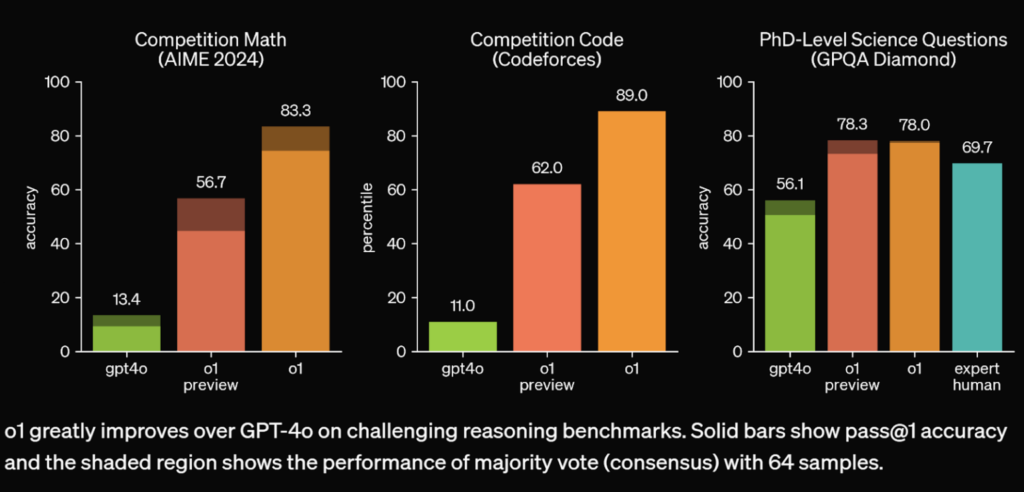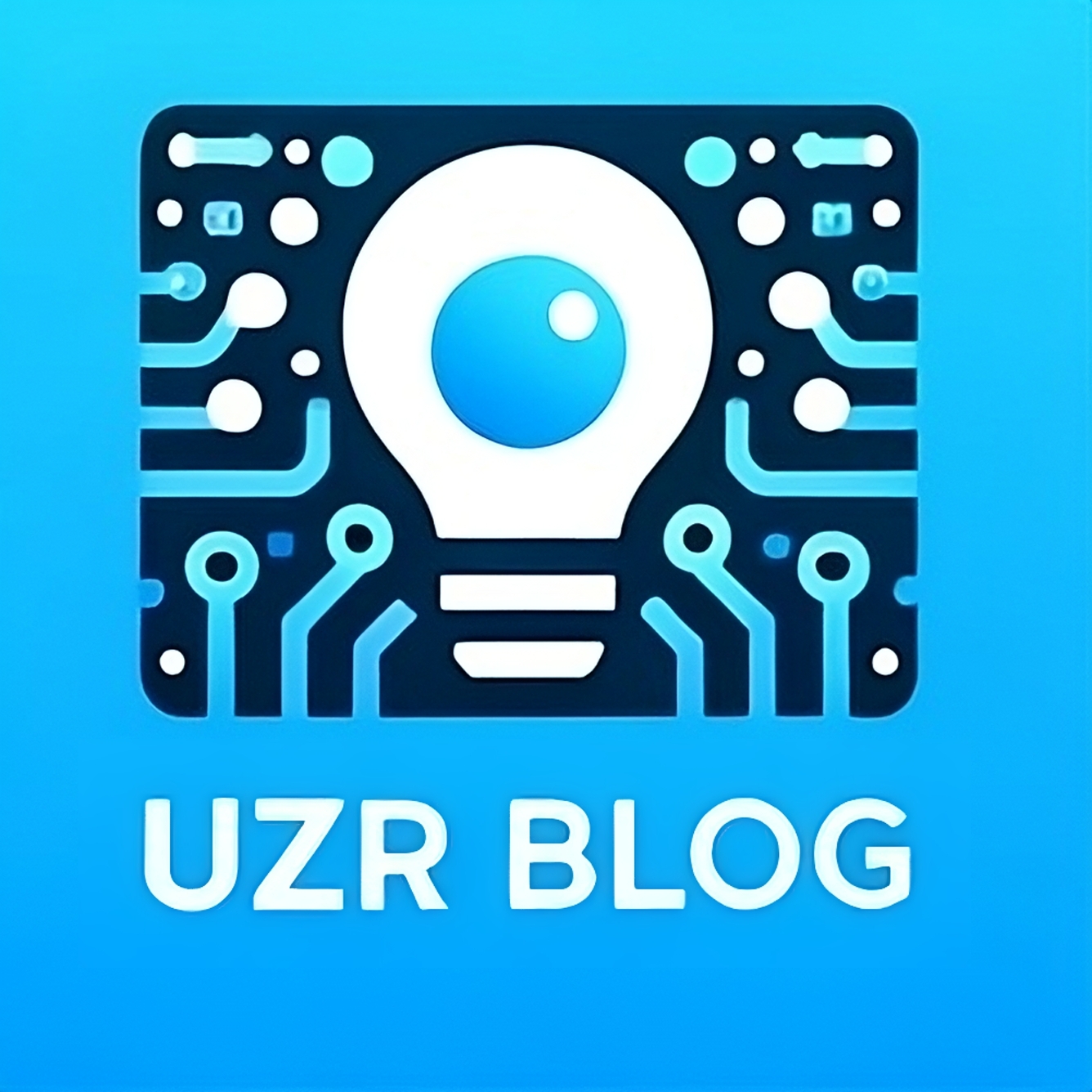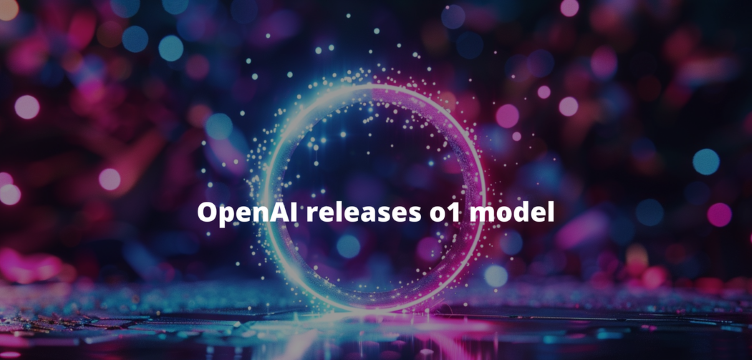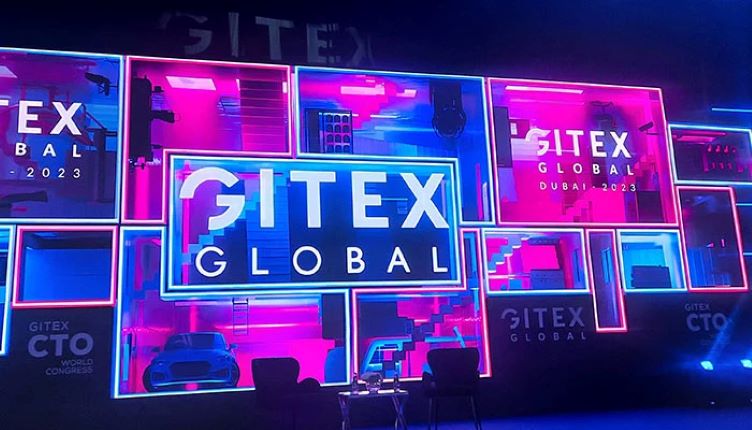In an era where advances in AI are made more quickly than lightening. Once more, open AI has shown to be a cutting-edge technology. The new Open AI o1 model is proving to be more than just another AI—it’s an intellectual powerhouse that can solve anything from challenging coding tasks to intricate mathematical issues!
This release is a component of OpenAI’s “Strawberry” AI reasoning project, which aims to improve the model’s capacity to decompose challenging issues into more manageable chunks for processing in stages.
The Rise of o1: A Game Changer in AI Technology:
The AI’s o1 model is not only designed to rival the human brain, but it also outperforms it in many ways. In addition to leaving expert engineers behind in the coding competition, it also created complicated algorithms while up against experienced programmers. However, it doesn’t end there—o1 is outperforming Math Olympiad champions and PhD candidates alike!
How Does o1 Do It?
This new methodology utilizes neural networks to process and evaluate massive data volumes quickly. It studies patterns in code, mathematical formulas, and approaches to problem-solving to learn, adapt, and perform better. o1 is redefining what it means to be an AI that “thinks” like a human—and perhaps better—by fusing speed and precision.
Key Features of the o1 Model:
Proficient Reasoning Ability: Through the use of a method called Chain-of-Thought (CoT) reasoning, the OpenAI o1 series is able to deconstruct complicated tasks into smaller, more manageable parts. This approach significantly enhances the model’s capacity to manage challenging tasks, like deciphering jumbled language and resolving challenging mathematical equations.
Speed vs. Performance: o1 is slower than earlier models like GPT-4o even if it does complex tasks very well because it “thinks before it answers.” Speed is sacrificed in exchange for a more accurate response; this is especially true for real-time applications.
Cost and Accessibility: At 80% less than the O1-preview, the O1-mini model is more affordable for a wider range of uses. However, compared to their predecessors, the o1 models are typically more expensive to use, which could provide difficulties for businesses wishing to incorporate these models into their daily operations.
Learned on Various Datasets: The o1 models are knowledgeable about both general knowledge and domain-specific subjects because they were trained on a mix of private, public, and custom datasets. Robust cognitive and communicative talents are made possible by this diversity.
Performance Benchmarks: The o1-preview model has demonstrated impressive outcomes in benchmarks.

What Does This Mean for the Future?
Both developers and programmers are experiencing opportunities and challenges as a result of this new open AI. It’s moving forward nicely. Programming and solving challenging mathematical problems can boost productivity, improve workflow, and even stimulate creative breakthroughs. But all of that raises issues like: Will artificial intelligence eventually replace fields that have historically been controlled by humans? It does, however, confront difficulties including more regulations, issues about data protection, and concerns about employment losses.
The Final Word:
The o1 of the open AI model is an incredible innovation that pushes the boundaries of artificial intelligence. AI is powerful today and has the ability to spread around the globe and succeed. Nevertheless, in light of all of that, whether you’re a student, programmer, coder, or just a tech enthusiast, you still need to keep an eye on this new open AI model because there are still certain risks to people.















